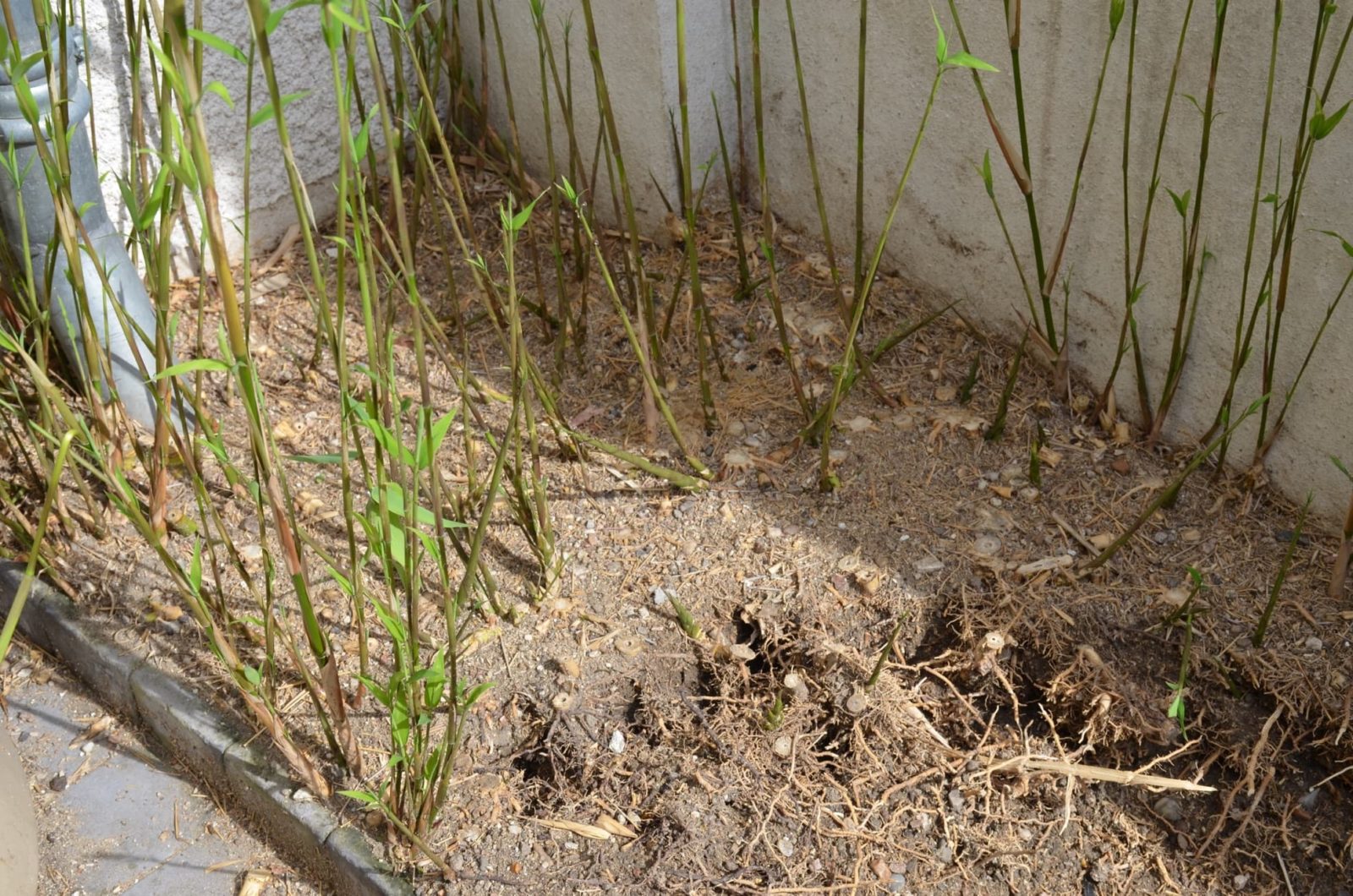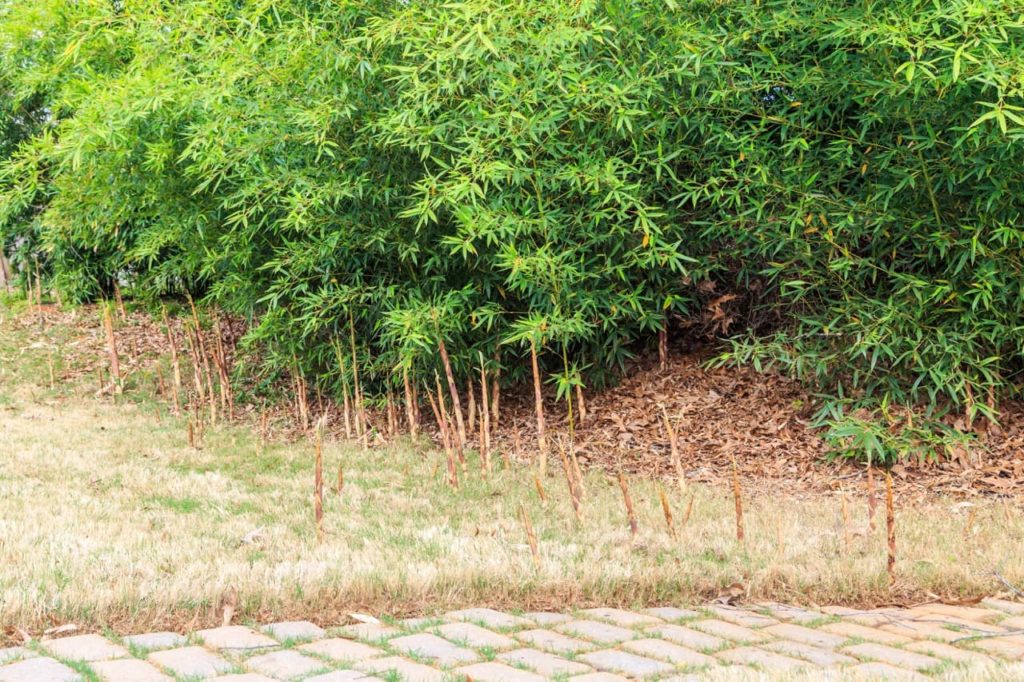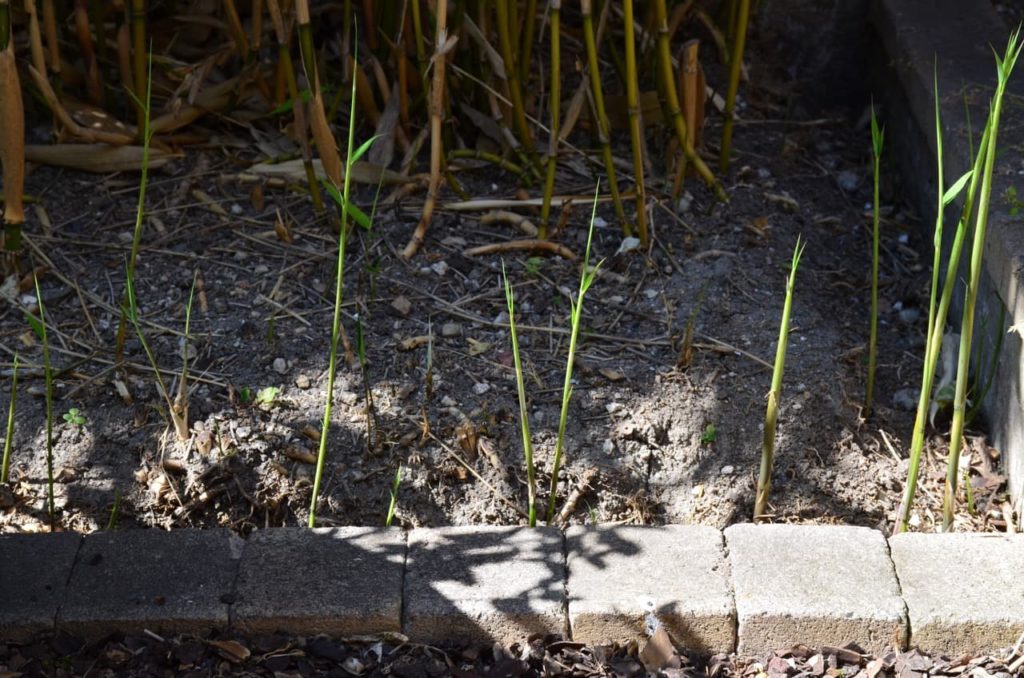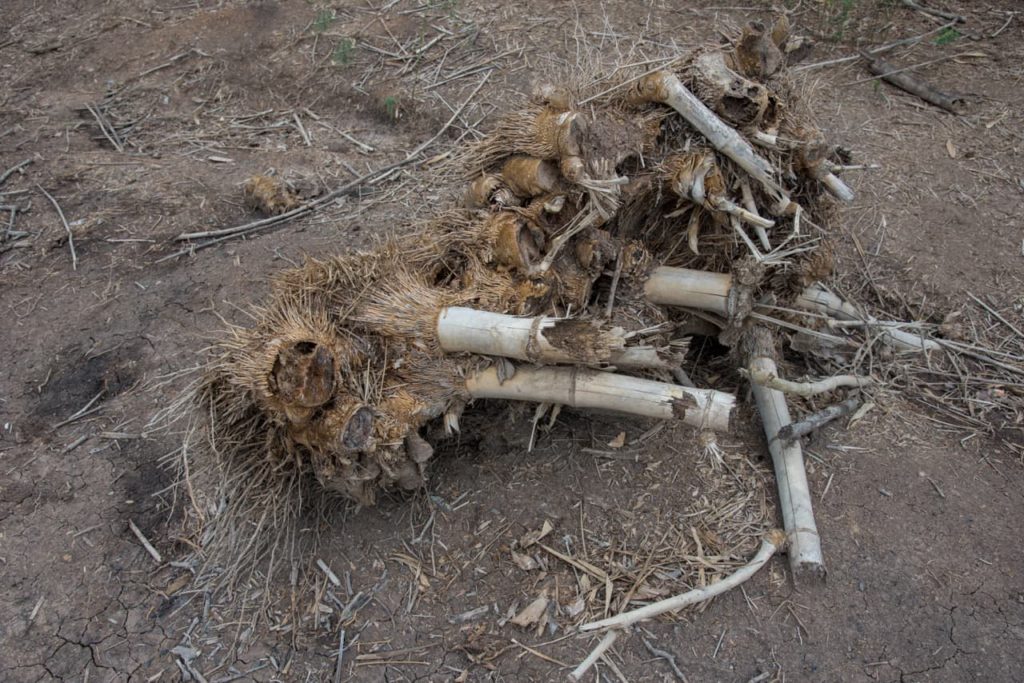Vigorous Bamboo Can Quickly Take Over – Here’s How To Remove It (Including The Roots)

PERENNIALS > BAMBOO > REMOVAL

Elizabeth is a Permaculture Garden Designer, Sustainability Consultant and Professional Writer, working as an advocate for positive change. She graduated from the University of St. Andrews with an MA in English and Philosophy and obtained a Diploma in Applied Permaculture Design from the Permaculture Association.
Reviewed By DAN ORI

Dan has over 27 years’ under his belt caring for plants and gardens. Working as a Horticultural Instructor and Consultant, he draws on a diverse range of experience that includes working as a Head Gardener, Tree Surgeon, Garden Centre Trouble Shooter, and writer of academic papers. Dan has a Level 3 Diploma in Horticulture and is currently a candidate for the RHS’s most prestigious award – The Master of Horticulture.
IN THIS GUIDE
BAMBOO GUIDES
Container Growing
Division
Overwintering
Pruning
Removal
Root Barriers
Sowing
Varieties
Bamboo can be a truly stunning addition to a garden in the right spot, but these vigorous plants can often become more of a problem than a delight.
If left unchecked, many types of bamboo can grow and spread at a tremendous rate and could completely take over an area if you do not do something about it.
Running bamboo, which spreads by means of long rhizomes that send up new colonies, are usually more problematic than clump-forming bamboo – but both can spread if you are not careful.
| Difficulty | Hard |
| Equipment Required | Saw, axe or mattock |
| When To Remove | Whenever it has overgrown |
When & Why Bamboo Can Be A Problem
Bamboo can become a problem where it is overly large and vigorous for its location or where it spreads beyond desirable bounds.
While bamboos can often be great ornamental plants (and can even provide useful and edible yields in a productive garden), shoots from running bamboo can pop up far from the parent plant.

They can breach ground cover membranes with ease and even break through solid barriers like patios, porches or conservatory floors.
Clump-forming bamboo, though they will not spread so broadly, can still spread or grow further and larger than you might wish.
“Serious consideration should be given before planting a Bamboo due to its invasive nature,” says gardening expert Dan Ori.
“Some varieties are not so rampant and will grow in containers, you will just need to keep on top of pruning back roots that poke out and keep them well watered.
“I would recommend whenever possible opting for a grass like a Miscanthus or a tree like a multi-stemmed birch or Acer to achieve a similar effect.”
Halting Excessive Bamboo Spread
If you have a bamboo in your garden that you wish to keep, but which has become a little too large or spread too much you can:
- Prune tall canes down to the required height in spring. The canes can be cut off to a lower height to restrict their growth upwards, but this will encourage lusher foliage growth.
- Dig up and separate sections from the edges of a clump or unwanted new colonies manually. Unearth the root systems of the sections of bamboo that you would like to remove and get rid of these, ensuring that you take away as much of the rhizomes below the ground level as you can.
- With a number of bamboos, you can eat cooked young bamboo shoots in the spring.1Rd, R. a. M. (2021, May 14). Are bamboo shoots good for you? All you need to know. Healthline. Retrieved August 24, 2023, from https://www.healthline.com/nutrition/are-bamboo-shoots-good-for-you Harvesting young shoots can be one excellent way to reduce the spread of an existing plant and give you an additional yield from your garden. While these will come back each year, harvesting shoots regularly can definitely help keep plants in check.
- Use bamboo canes for a range of other purposes. Bamboo is a very useful material, which can be used as a sustainable option for a range of different things in your home and garden. By treating your bamboo as a crop, you can harvest plenty of it and keep existing plants in check.

After digging out unwanted sections of bamboo that have grown out of bounds, it is a good idea to insert a physical barrier vertically into the soil around the remaining plant to prevent its further spread, while keeping the existing plant.
Removing Bamboo
In an organic garden, it is never a good idea to use targeted weedkillers.
Instead, use physical barriers to contain existing plants or take manual steps to slowly remove and eradicate the plant altogether from your garden.
The best option is to take steps to remove an unwanted plant manually, by digging out the existing rhizomes and lifting the plants (or sections of the plants) from the soil.
Large bamboo can be challenging to remove, especially if you are dealing with a heavy soil.

However, it is worth taking the time to dig around the base of the entire plant with a sharp shade and slowly undertake the laborious work of removing all the rhizomes from the ground.
Use a saw, axe or mattock to chop through thick and tangled root systems and remove as much of the plant you wish to eradicate as you can, section by section.
Try to make sure that no rhizomes are left behind.
Eradicating a vigorous bamboo entirely will not be easy, but by taking the time to dig up and remove as much of the plant as possible – then repopulating the area with dense plant cover of more wanted kinds – you should eventually be able to get rid of the bamboo that you do not want from your garden.
References
- 1Rd, R. a. M. (2021, May 14). Are bamboo shoots good for you? All you need to know. Healthline. Retrieved August 24, 2023, from https://www.healthline.com/nutrition/are-bamboo-shoots-good-for-you
